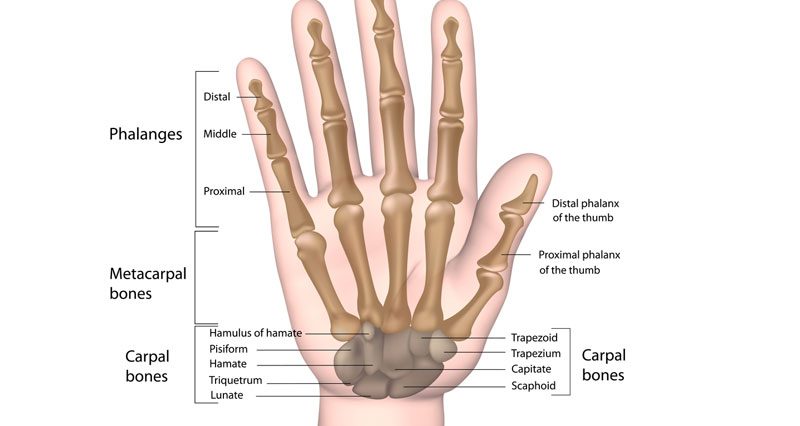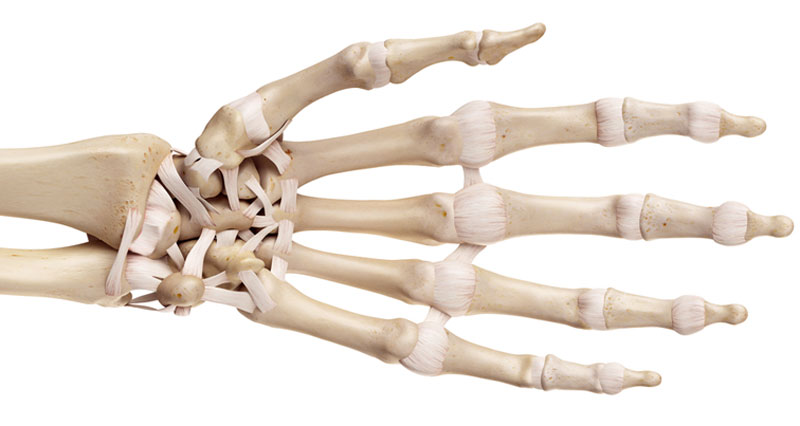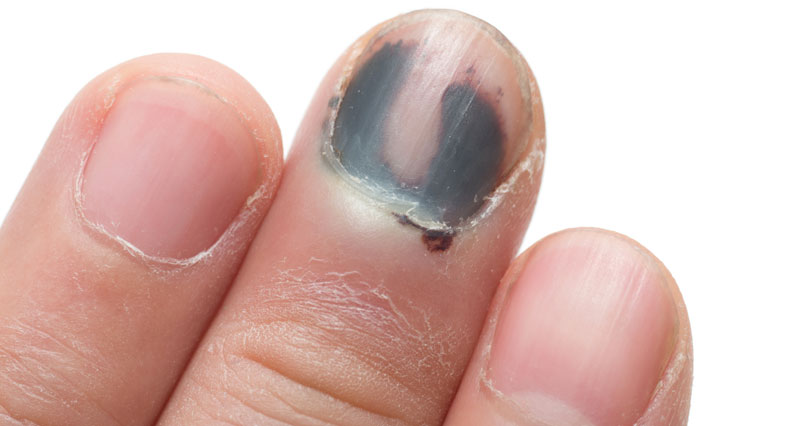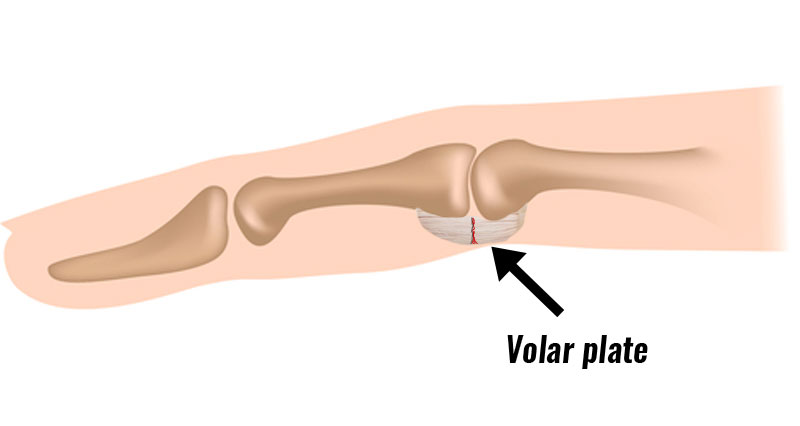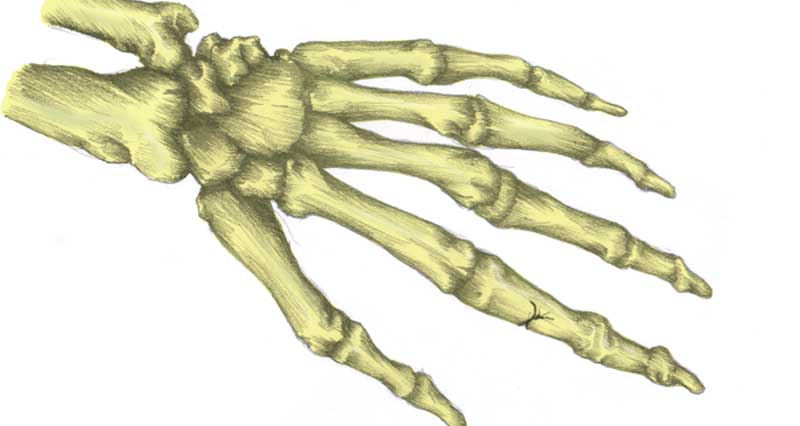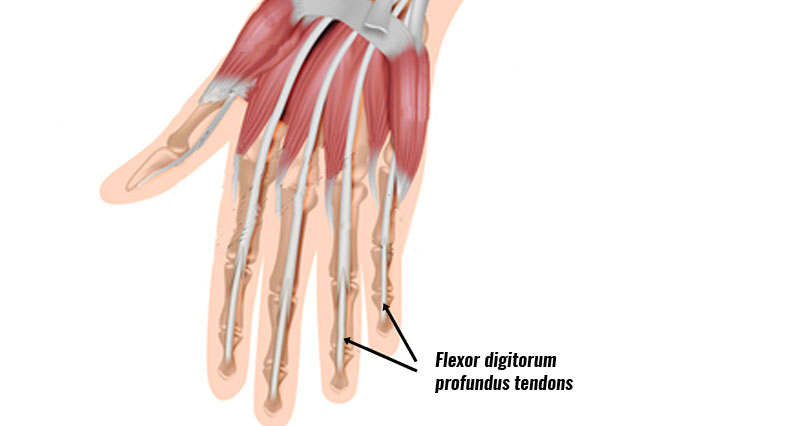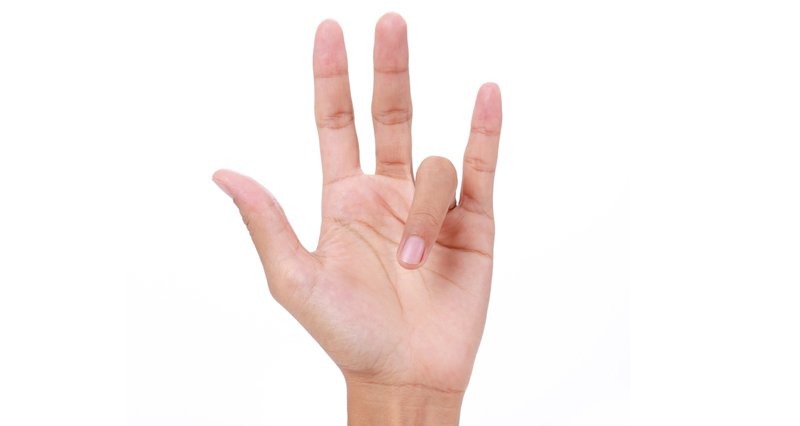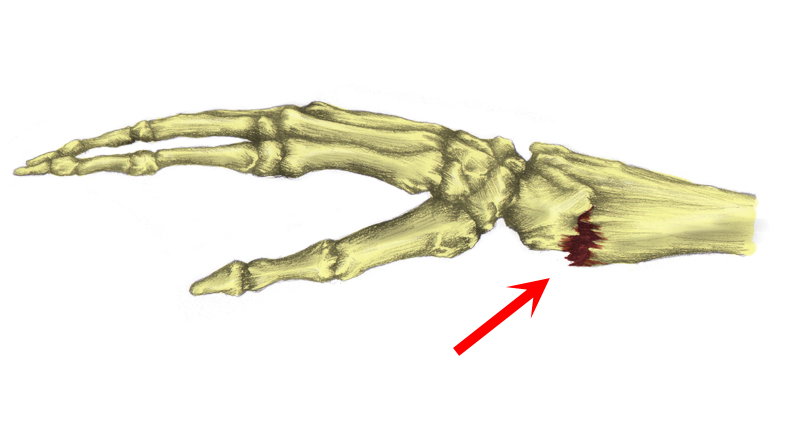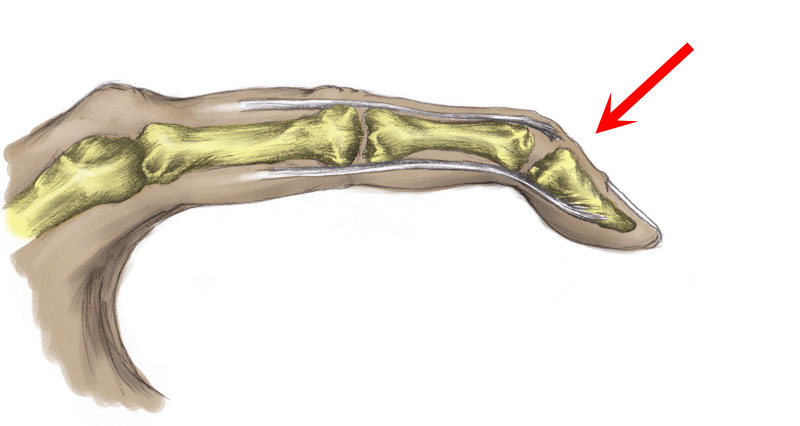Any of the bones in the hand or fingers can be broken (fractured). There are a number of common fractures which occur, particularly in sport. Here we outline the common hand and finger fractures.
Go direct to:
Metacarpal fracture
The metacarpal bones are the five long bones in the hand. Any of these bones can be broken or fractured. There is a range of specific metacarpal fractures, but It is the first metacarpal under the base of the thumb which is the most commonly injured.
- Symptoms will include sudden pain usually from the impact.
- Trying to move the hand will be painful and swelling will usually develop along with bruising a bit later.
- In a severe fracture known as a displaced fracture, the hand will appear deformed.
Read more on Metacarpal fractures.
Boxer’s Fracture
A Boxer’s fracture is a break to either the 4th or the 5th Metacarpals. As the name indicates, this injury is usually caused by punching something hard.
- Symptoms include instant severe pain in the hand.
- Swelling develops quickly, possibly followed by bruising.
- The outside edge of the hand where the fracture is will be particularly tender to touch and the knuckle on the outside may appear dropped.
Read more on Boxer’s fracture.
Thumb fracture
A broken thumb is either a fracture of small bones called phalanges, or a fracture at the base of the thumb. These specific thumb fractures are called a Bennett fracture and a Rolando fracture.
Fractures to the phalanges bones in the thumb are is not as common as a broken finger, but just as painful!
- Symptoms include sudden pain at the time of injury with immediate swelling and bruising that will come on rapidly.
- The thumb will be particularly painful when attempting to move it and it may also click during movement.
Read more on Thumb fractures.
Broken finger
A broken finger is a break or fracture in any one of the 3 small phalange bones which make up each finger. It will usually be the result of some kind of impact or collision.
- The athlete will feel immediate pain.
- Swelling and bruising will appear quite quickly.
- It will be painful to try and move the finger.
- The finger may appear deformed if the bone is displaced or joint dislocated.
- If there is any nerve damage, the finger may be numb or feel tingly.
Read more on Finger fractures.
